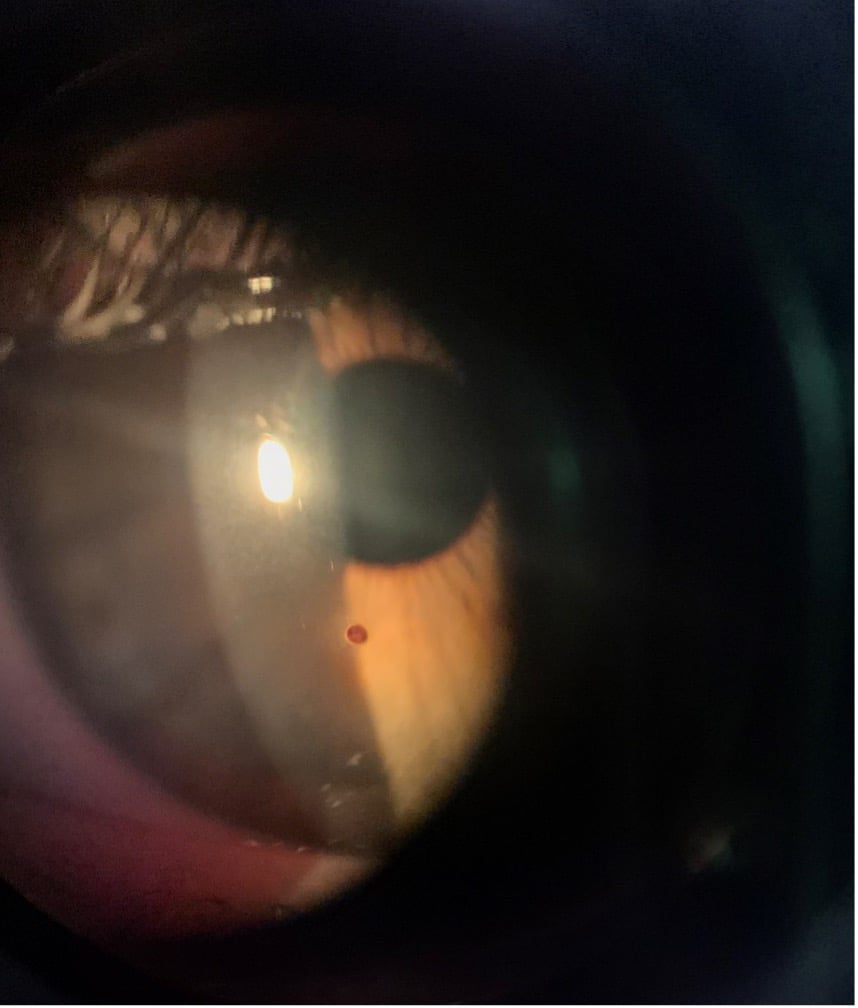Who do you see/where do you go when you have something in your eye or you experience eye pain or a sudden change in vision?
– An Optometrist?
– An Ophthalmologist?
– A GP?
– The emergency department
We’re available 6 days a week and will 𝘢𝘭𝘸𝘢𝘺𝘴 fit in an eye emergency (even out of hours if necessary).
Our four therapeutic Optometrists are all skilled users of a piece of equipment called a Slit Lamp.
The photo below was taken using a slit lamp, it allows the Optometrist to view the eye up close, under high magnification and illumination to view foreign objects or foreign bodies in the eye. This picture shows an embedded ‘rust ring’ in someone’s cornea, caused by metal getting into and lodging in the cornea, because the cornea is mostly made out of water, metal can quickly rust and cause toxicity. By using a short acting local anaesthetic eye drop, the rust ring was removed quickly and painlessly.
The most common foreign material that we remove from people’s eyes are metal, rust, grass seeds, paint, wood, sand particles, eyelashes and even insect legs. They also often see corneal abrasions (scratches) caused by foreign materials getting trapped under the eyelids and scratching the eye’s surface during a blink.
𝗥𝗲𝗺𝗲𝗺𝗯𝗲𝗿:
- Always wear safety glasses when using power tools or in dusty environments and sunglasses outdoors especially if it’s windy.
- Flush your eye out immediately with water if you get something in it
- Call your optometrist, or go to your GP/ED if an optometrist is not available
If our optometrists are unable to remove a foreign object or if it requires surgery, they are able to organise a referral and an appointment with a local eye specialist if necessary.
Our optometrists all have therapeutic capabilities meaning they are trained in foreign body removal, and can prescribe medications such as anti-inflammatory/steroid eye drops and antibiotics if necessary following foreign body removal.
This picture shows a ‘rust ring’ in a cornea

Rust Ring using Slit Lamp – Neilson Eyecare
Slit lamp used for viewing the eye

Neilson Eyecare – Eye Exam
Sudden Changes to Vision or Pain
If you experience any of the following symptoms, you should be seen immediately.
- Eye pain
- Red/sore eyes – especially if you are a contact lens wearer
- Sudden blurred vision
- Loss of vision
- Development of a blind spot in your vision
- Floating spots in your vision (floaters)
- Flashes of light like lightening
- Curtains or ‘spiderwebs’ across your vision
- Ulcer on the eye
- Herpes/Shingles in the eye
- Retinal detachment or tear symptoms


Recent Comments